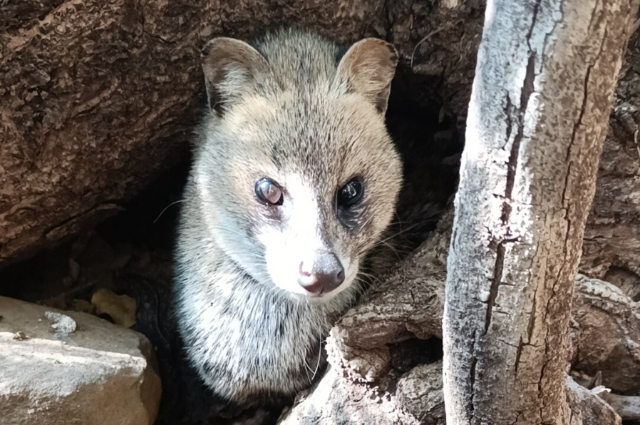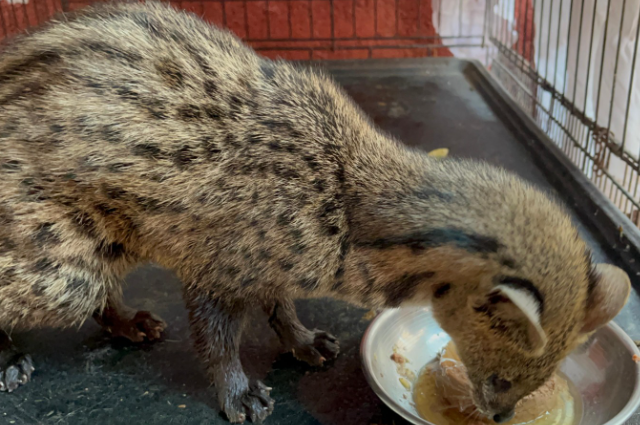
In the heart of India's wild spaces, a little hero is defying the odds. Meet a small Indian civet that battled dehydration and vision loss, turning its struggle into a symbol of nature's strength. This isn't just about one animal, it's a story that could echo through the whole web of life, reminding us of the impact even the smallest creatures can have on our precious biodiversity.
In a tale of survival, a small Indian civet, discovered severely dehydrated with vision loss in one eye and battling a viral infection, is now on the verge of returning to its natural habitat. The nocturnal mammal was spotted in a state of distress, aimlessly roaming a village in Shahpur, Thane district, even during daylight hours, prompting concerned villagers to alert the Wildlife Welfare Association, a local NGO. The WWA rescued the animal but with the initial suspect of rabies due to its unusual behavior, Dr. Shardul Salvi, a wildlife veterinarian at Thane CPCA, revealed that another possibility was a head injury, possibly from a vehicle collision.
Upon examination at the Thane CPCA, the civet displayed signs of dehydration, opacity in the left cornea, pneumonia, and the presence of three types of pathogens in its body. Administering saline drips for diarrhea, eye drops for corneal opacity, and a diet of easily digestible food, the veterinary team successfully treated the mammal, preventing potential electrolyte imbalances that could have led to a fatal outcome.

Dr. Salvi emphasized the critical timing of the intervention, stating, "For one, it was completely dehydrated... And then, if the diarrhea had continued for another day, it would have led to heavy electrolyte imbalance which could have caused death." While the source of the viral infection remains uncertain, Dr. Salvi acknowledged the possibility of transmission from a domestic cat.
The civet, now free from diarrhea and with resolved corneal opacity, is on the path to recovery. Dr. Salvi noted the success of the treatment, stating, "The breathing issues it had when it was brought in have subsided." However, a second x-ray is planned to conclusively rule out pneumonia.
Shakuntala Majumdar, president of TCPCA, expressed the rehabilitation goal, stating, "The idea of the treatment is that it will be able to fend for itself once it is released." After another week of rehabilitation, the civet was entrusted to officials of the forest department and volunteers from the Wildlife Welfare Association before being released back into the wild.

Honorary wildlife warden Rohit Mohite and his team, in collaboration with officials from the Shahpur range of the state forest department, successfully rescued the cat-like creature. These Indian civets are small, nocturnal mammals native to India, known for their appearance like a cat. Belonging to the Viverridae family, they have a slender body, long tail, and distinctive facial markings. These omnivores primarily feed on small mammals, birds, fruits, and insects.
Indian civets play a crucial role in controlling pest populations and contribute to the ecosystem's balance. While they are generally unreachable, their presence is vital for maintaining biodiversity in the subcontinent. Additionally, as omnivores, they aid in seed dispersal through their consumption of fruits. And this recent heartwarming story highlights the resilience of wildlife in the face of adversity and the importance of timely intervention in safeguarding their well-being. The successful rehabilitation of this Indian civet serves as a testament to the collaborative efforts of local communities, NGOs, and wildlife authorities in preserving the delicate balance of nature.
. . .
References:
